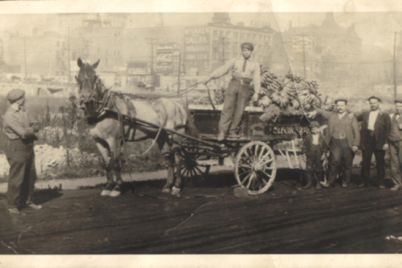Nothing says Italian style like a Fiat 500 (pronounced cheen·kweh·CHEN·toh). My love affair with the 500 began when I was 16. I really wanted one, but it would not fit into my suitcase. So I had to go home without one. I don’t know if I will ever own a super cute, chubby 500, but I have spent years photographing them all over Italy. Every time I see one, I just want to give it a hug!
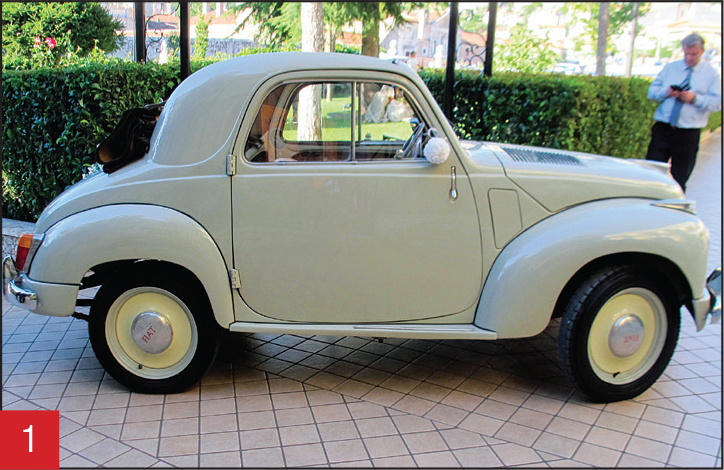
The original 500 was a pre-World War II, two-seat roadster. It was produced until 1955 and was affectionately known as Topolino, Italian for “little mouse.” I photographed one at a wedding in the town of Padula (Photo 1). The larger Fiat 600 (pronounced say·CHEN·toh) (1955-1969) was a two-door sedan. It was the blueprint for the 500 we have come know and love. The lovely 600 in Photo 2 blends in perfectly with the scenery of a narrow street in the town of Troia, in the region of Puglia.
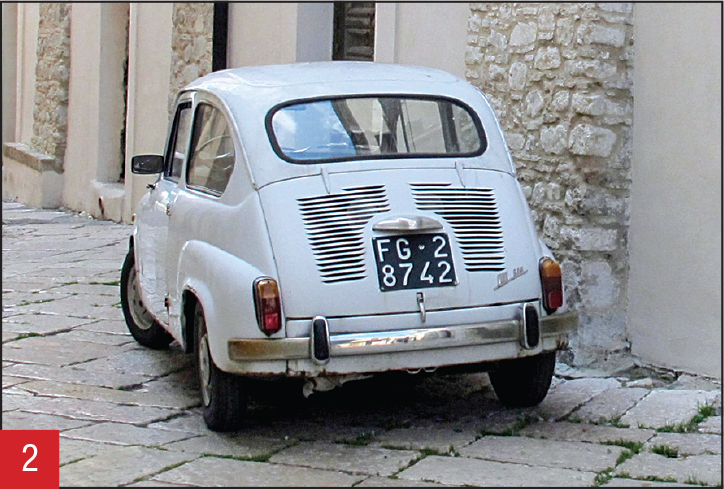
Fiat’s first 500 relaunch was the 500 Nuova (1957-1961). It was designed by Dante Giacosta. By 1975, Fiat had produced 4 million units. It was Italy’s first real “city car” – a small, light-weight, fuel-efficient vehicle, perfect for navigating narrow streets. The car was given the name 500 for its 500 cc engine and weight of 500 kg. The Fiat 500 Nuova was 2.5 metres long, with a rounded shape, and a fold-back top. Its rear-mounted engine could reach a top speed of 85 km/hr.
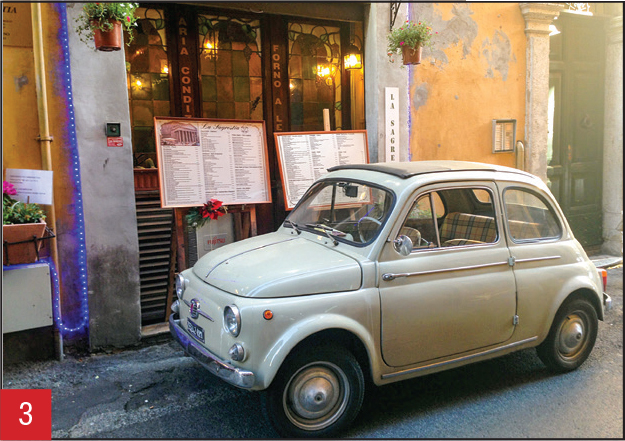
The 1957 500 Nuova in Photo 3 was spotted in Rome, just around the corner from the Pantheon. The cloth covering the sun-roof folds back all the way rather than just half-way, which would become the norm in later models. Notice the “porte di suicidio” or suicide doors, which are hinged at the rear rather than at the front. They are so ominously named because of the risk of them accidentally opening when driving at high speeds and the driver or passenger falling out of the car.

This might have been caused by the airflow of the moving car, which worked against keeping the doors closed. Yikes! Notice the posh Burberry interior. The owner of this 500 came out of a nearby apartment. He was a stylish older man who could have been the original owner! In 1965 the suicide doors were replaced with front-hinged doors and the maximum speed was increased to 120 km/hr – (Photos 4 and 5) Whee!!!

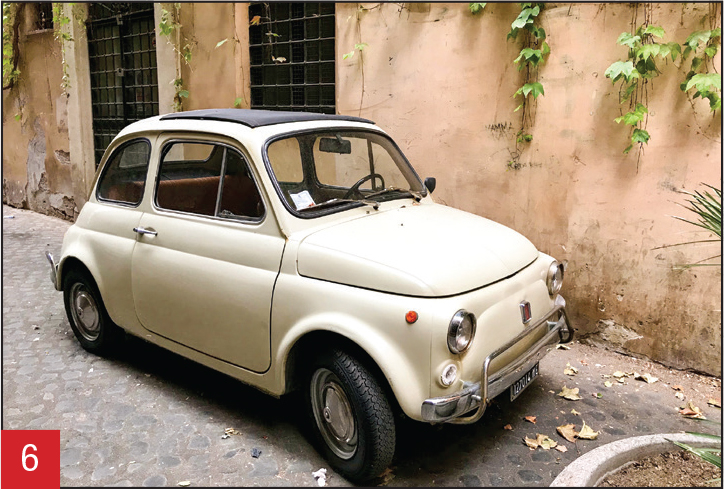
The 500L was produced from 1968-1972. The L is for “Lusso” or luxury. The model has a chrome trim, chrome bumpers and tubular guards protecting the front bumper. A rounded rear bumper protects the sides. It came with a black steering wheel and interior carpeting. The rear name ornament spells FIAT in capital letters – Photos 6 and 7. From 1972 to 1975, Fiat 500 returned to the basic interior. The company must have realized that “luxury 500” was an oxymoron!
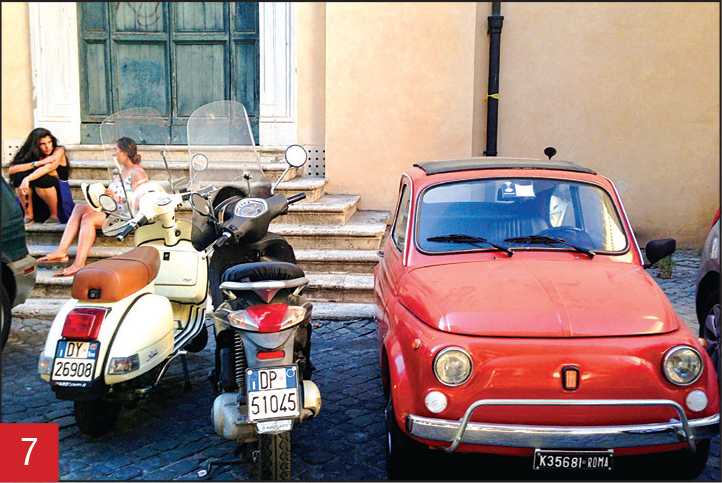

In October 1973, Fiat launched the Centoventisei or 126 (pronounced chen·TOH·venty·SAY), a more modern, angular model that would replace the 500 (Photo 8). My zio had a turquoise one in the 1980s. A rear-engine compact city car, the 126 never became as popular. It just didn’t have the chubby cuteness of its predecessor. However, it was very popular in the former Eastern Bloc countries because of its fuel efficiency. Later models were made in Poland until 2000 and dubbed the “Polski 126p.”
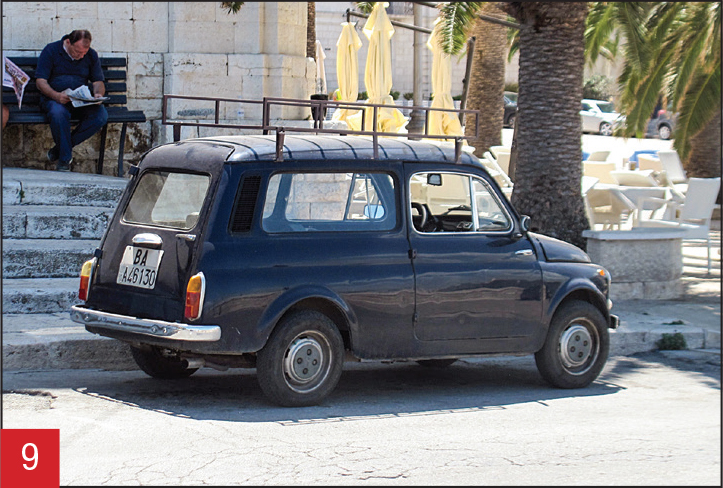
The Fiat 500 Giardiniera (Photos 9 and 10), also known as the 500K or the Autobianchi Giardiniera was made from 1960-1977. It was basically a 500 station wagon. Cover the back half of the car in the photo, and you will see that the front half is totally 500ish!
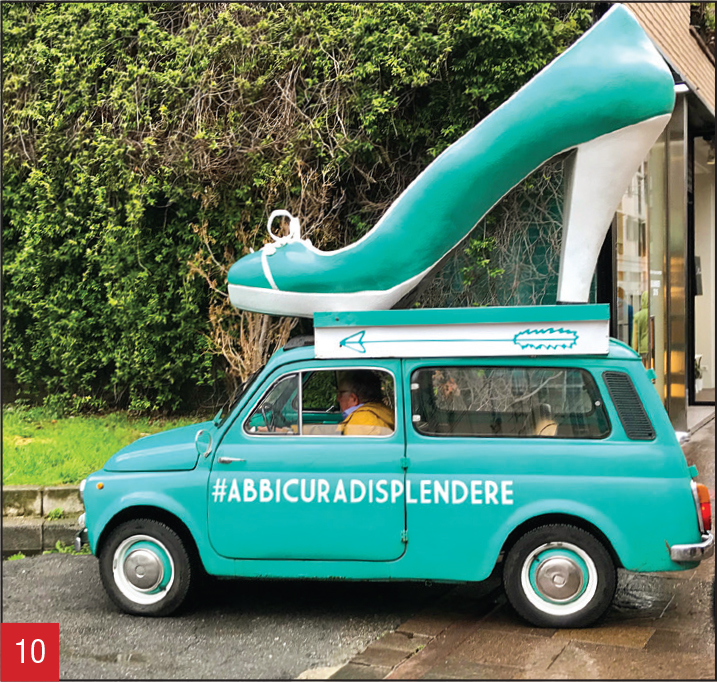
In 1970, production of the 500 was transferred to Autobianchi, a Fiat subsidiary in Monza. Later models were branded Autobianchi rather than Fiat. Only in Milano would you find a turquoise 500K topped with a giant stiletto on a shoe box (Photo 10)!

In 2007, 50 years after the 500’s debut, Fiat relaunched the 500 again. This “modern” version tried to retain the original iconic retro look (Photo 11). Although it is cute, it does not compare to the original. The model was used by Fiat to attempt to enter the North American market once again. But North American tastes tend towards larger vehicles. Sales of the 500 in North America were suspended in September 2019, though the larger 500L and 500X SUV are still available.
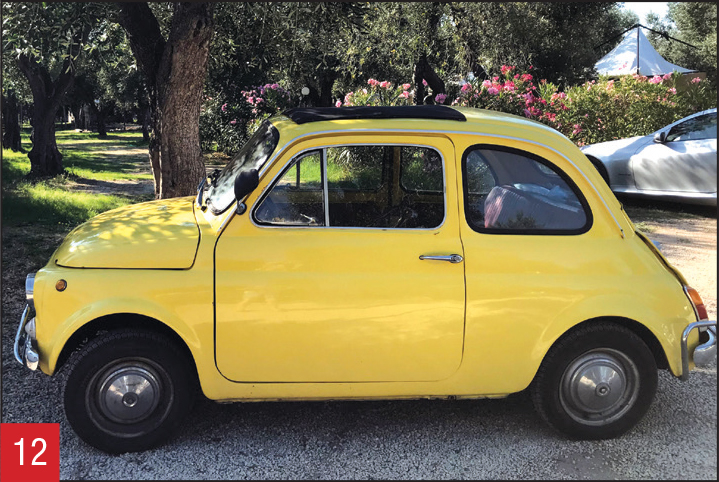
My “500 radar” is on high alert at all times when I am travelling in Italy. I found a bright yellow 500L in an olive grove by the beach in Mattinata, near Foggia (Photo 12), and a white one above the sassi in Matera (Photo 13).
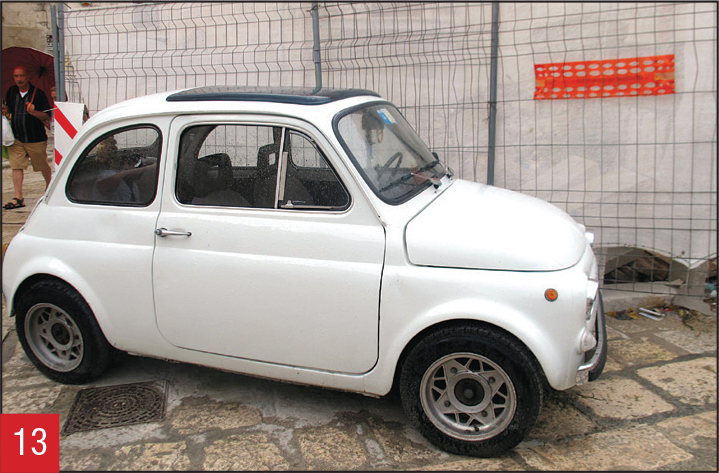
In my home village of Orsara di Puglia, there are three resident 500s. The Positano yellow one is my oldest subject (Photo 14). We met a long time ago, and in my earliest photo of her, she was in bad shape. She had some work done and even got to be the star at the wedding of her owner’s daughter a few years ago (Photo 15).
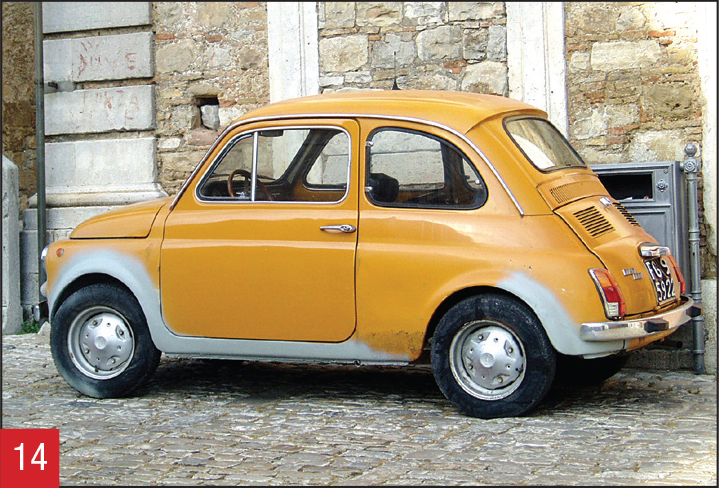

The newest “resident,” I have named Celestina, since she is light blue with a bright red interior (Photo 16). Celestina is extremely photogenic against the cobblestones and textured walls.

Last December, I hand-printed cards of the 500 to sell at a Christmas market. A red 500 Nuova in the snow, with a tree tied to the top (Photo 17). They were so much fun to make, I had a smile on my face the entire time. I sold most of my cards, and almost every customer had a story to tell me about great 500 memories. One told me her nonno had a red 500 when she visited him in the 1980s; another said his daughter in Italy sends him a photo every time she sees “one of them.” He thought she would be thrilled when she’d open the card.
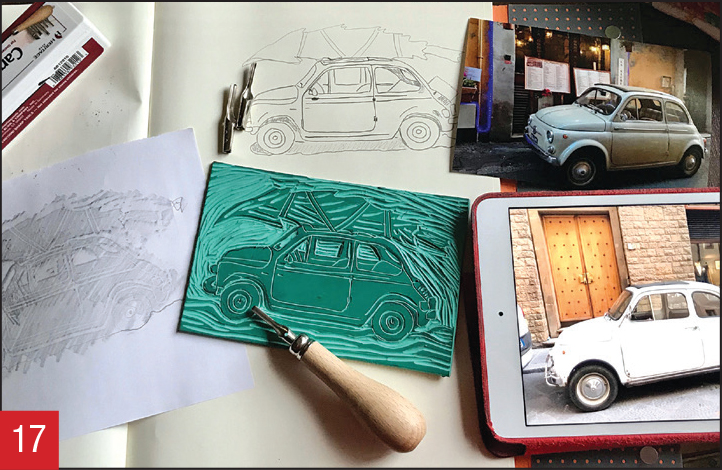
I am clearly not the only one obsessed with the 500. Since I will probably never own one, I will have to continue producing Cinquecento artwork instead!
Cristina Pepe was born in Orsara di Puglia and immigrated to Canada as a young child. A Vancouver-based artist, writer and educator, she loves to travel to Italia every year. Cristina writes an art and culture blog, “Un po’ di pepe,” about all things Italian.


